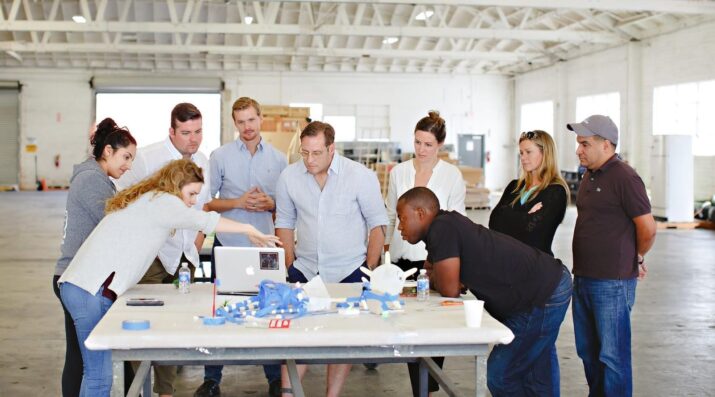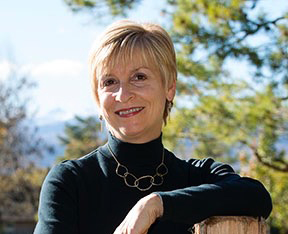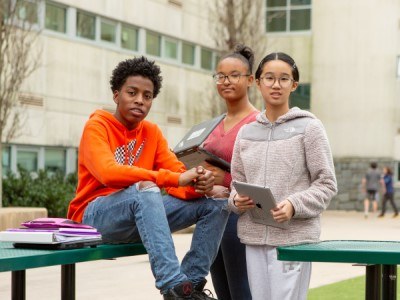Networks for Learning: The Community of Practice
Topics

Educators are rethinking the purposes, forms, and nature of assessment. Beyond testing mastery of traditional content knowledge—an essential task, but not nearly sufficient—educators are designing assessment for learning as an integral part of the learning process.
Practitioner's Guide to Next Gen Learning
Designing and leading communities of practice for deep connection and powerful learning in K-12 education.
Life is at base a network. It thrives on connection. We all know this, experientially, because we are alive! And when we are not feeling alive or lively it is often because we are disconnected, cut off in some way—from other people, from the natural world, from our selves (feelings, bodies, values), from power or a sense of purpose.
–Curtis Ogden, Senior Associate at the Interaction Institute for Social Change
In two recent blog posts, the first an introduction to network theory and the second more specifically focused on networks in education, Curtis Ogden discusses the value of networks for education and learning. Although, as Curtis notes, networks are hardly a new phenomenon, the benefits of strong networks and their power to effect social change make them worthy of closer examination for educators who are transforming learning to meet the needs of students in a changing world.
Next Generation Learning Challenges is building on the work of Curtis and others as we support networks of innovative educators, for example through communities of practice. Being part of such a network is especially important for education pioneers who are tackling new ideas like NGLC MyWays’ broader competencies for student success or rethinking student assessment so that it measures a fuller complement of student abilities. As one NGLC community of practice member put it, “Part of why this is hard (and exciting) is that we're in pretty uncharted territory here.”
NGLC Program Officer Tony Siddall facilitates two communities of practice, one focused on NGLC MyWays and one related to the NGLC and Center for Innovation in Education Assessment for Learning Project (ALP). For this edition of Friday Focus: Practitioner’s Guide to Next Gen Learning, I spoke to Tony about his experiences supporting these practitioner networks, something he describes as “an essential but often overlooked part of the change process.” In particular, he shared his insights about:
- The strengths and benefits of participating in a community of practice
- The characteristics of a robust educator network
- Designing a community of practice for deep connection and powerful learning
A Place to “Geek Out” with Peers
Part of what distinguishes a community of practice from other kinds of networks is that learning is at the heart. As Etienne Wenger points out in his paper, Communities of practice: a brief introduction, they are “groups of people who share a concern or a passion for something they do and learn how to do it better as they interact regularly.”
Rethinking learning design and assessment is complex, challenging work, and no one has all the answers. Educators passionate about next generation learning, like the members of the communities of practice Tony facilitates, are widely distributed throughout the country. Virtual gatherings provide a platform for sharing ideas, resources, and solutions to common challenges with far-flung peers. As one participant of the ALP community describes it, it is also “a space where we can just get together and geek out on assessment design.”
In his role as facilitator, Tony has tapped into members’ curiosity and intrinsic motivation to learn by designing the community of practice experiences with learner agency and relevance in mind. For example, most of the initial meeting of the MyWays community of practice was devoted to creating a learning group charter and answering the question, What would we like to learn together?
According to Tony, the time it takes to co-design for relevance is time well spent. Surveys can tell you only so much, he observes, and do not capture as full a range of interests and challenges as conversations do. Instead of filling out a survey, then, members co-created a list of topics they are curious about and questions they are trying to answer, like, “How are we all helping our students access learning beyond the four walls in ways that support MyWays competencies?” or “What measurement approaches are appropriate for competencies like Creative Know How, and what are valid uses for the results?” These topics then fed into the agendas for subsequent meetings.
Free-Flowing Information
Robust networks are characterized by a strong flow of information, but Tony’s vision for the communities of practice is for that information to flow in multiple directions. As opposed to webinars and many convenings, he says, in which most of the time is dedicated to a one-way flow from presenter to listener, the community of practice is a conversation between practitioners.
Tony does invite experts for deep dives on areas of interest and challenge. For example, a recent call on the topic of assessing Habits of Success included Dave Paunesku from Stanford’s Project for Education Research that Scales (PERTS). Julia Freeland Fisher from the Christensen Institute participated in another session, on developing students’ social capital. Nevertheless, as a design principle, rather than dedicating 80 percent of the time to experts and 20 percent to people talking about their work, Tony advocates for flipping that time: “prime people with key, thoughtful questions, and then make space for that. Think about the informal time as much as the formal time.”
Fertile Ground for Inspiration
Inspiration is one of the most commonly cited benefits of networks, and it is especially important for educators who are wayfinding through the uncharted territory of new designs for learning and assessment. To support this network effect, Tony draws inspiration from the ideas of popular science author and media theorist Steven Johnson, in particular his TED talk “Where Good Ideas Come From,” which explores “the slow hunch” and the role played by networks both inside the brain and in the outside world:
"An idea—a new idea—is a new network of neurons firing in sync with each other inside your brain.... And the question is: how do you get your brain into environments where these new networks are more likely to form? We take ideas from other people...and we stitch them together into new forms and we create something new. That's really where innovation happens."
–Steven Johnson
Tony keeps the size of the communities of practice small, so that all members have time and feel comfortable talking, as well as to support what he calls “the collision of partly formed ideas.” He also favors a “lightly facilitated discussion” style, which he recognizes as a challenge for organizers: “When we bring people together, there’s a tendency to over-structure. The conveners’ perception of their value often comes from bringing a good agenda and good experts, so a lot of us wonder if we are doing our jobs if we have informal time.” An unintended consequence of too much structure, he says, is that it can squeeze out the most important and surprising connections between ideas—the inspiration, in other words.
Partnerships, Connections, and Service to the Field
A community of practice often has an enduring, amplifying orientation as well. As Tony puts it, “On every call, the idea is to start conversations, but not finish them.” The time spent in the actual meeting, he says, is only part of the network building. The agendas are designed to hear enough of what others are doing to spark follow-up conversations. To him, a success indicator for the MyWays and ALP communities of practice is the number and variety of activities like meet-ups at conferences, co-presenting on panels, and collaboration around toolkits he’s observed among members. His aspiration for the communities of practice he facilitates is to “use this forum to surface our gift to the field—to go from curiosity about a topic to deciding to create something to share with the field. That’s our mission.”
According to Tony, to strengthen a network so that it can better fulfill this mission, a community of practice should articulate a shared culture and identity. His underlying hypothesis is that if you create “a close-knit, robust network, one with shared interests, beliefs, and values, as you grow and invite others into the network, the values and norms of the core cluster are so strongly held that they become contagious.” This shared identity needs to emerge over time, as participants build trust and ask important questions together. “If we invite educators to build the future of public education,” he believes, “if we create spaces for them to bring their full selves, they have both the collective expertise and the passion to deliver beyond our wildest dreams.”
Next Generation Learning Challenges is looking to co-create ways for the field to be more strategic about using networks to drive future learning shifts. We encourage you to share your responses and ideas about network effects and offer examples of healthy and catalyzing communities of practice by joining the conversation in the NGLC Networks for Learning group on LinkedIn. This group, led by Next Generation Learning Challenges, along with partners such as Curtis Ogden, FSG, Getting Smart, and Remake Learning, is for leaders of K-12 learning networks and anyone else interested in learning networks as a driver for change in K-12 education.
Resources
- Communities of practice: a brief introduction, a short paper by Etienne Wenger, who, along with anthropologist Jean Lave, is credited with originating the idea, defines the community of practice, enumerates its functions, and applies it to student and educator learning.
- NET GAINS: A Handbook for Network Builders Seeking Social Change, by Peter Plastrik and Madeleine Taylor, provides people who are developing networks for social change with practical advice based on the experiences of network builders, case studies of networks small and large, local and international, and emerging scientific knowledge about “connectivity.”
- The Role of Networks in Advancing Personalized Learning, a brief by FSG (free but with registration required), discusses why networks matter for the personalized learning sector and explores the roles that networks can play, including national movement building, model discovery, adoption, and improvement, regional systems facilitation, and tool and practice development. You can also read an overview of the FSG report in a blog post by NGLC program officer Sarah Luchs, titled “Educator Networks: Building a Community to Advance Learning.”
- A template for co-creating a learning group charter like the ones NGLC program officer Tony Siddall uses with the NGLC MyWays and Center for Innovation in Education Assessment for Learning Project Communities of practice.




